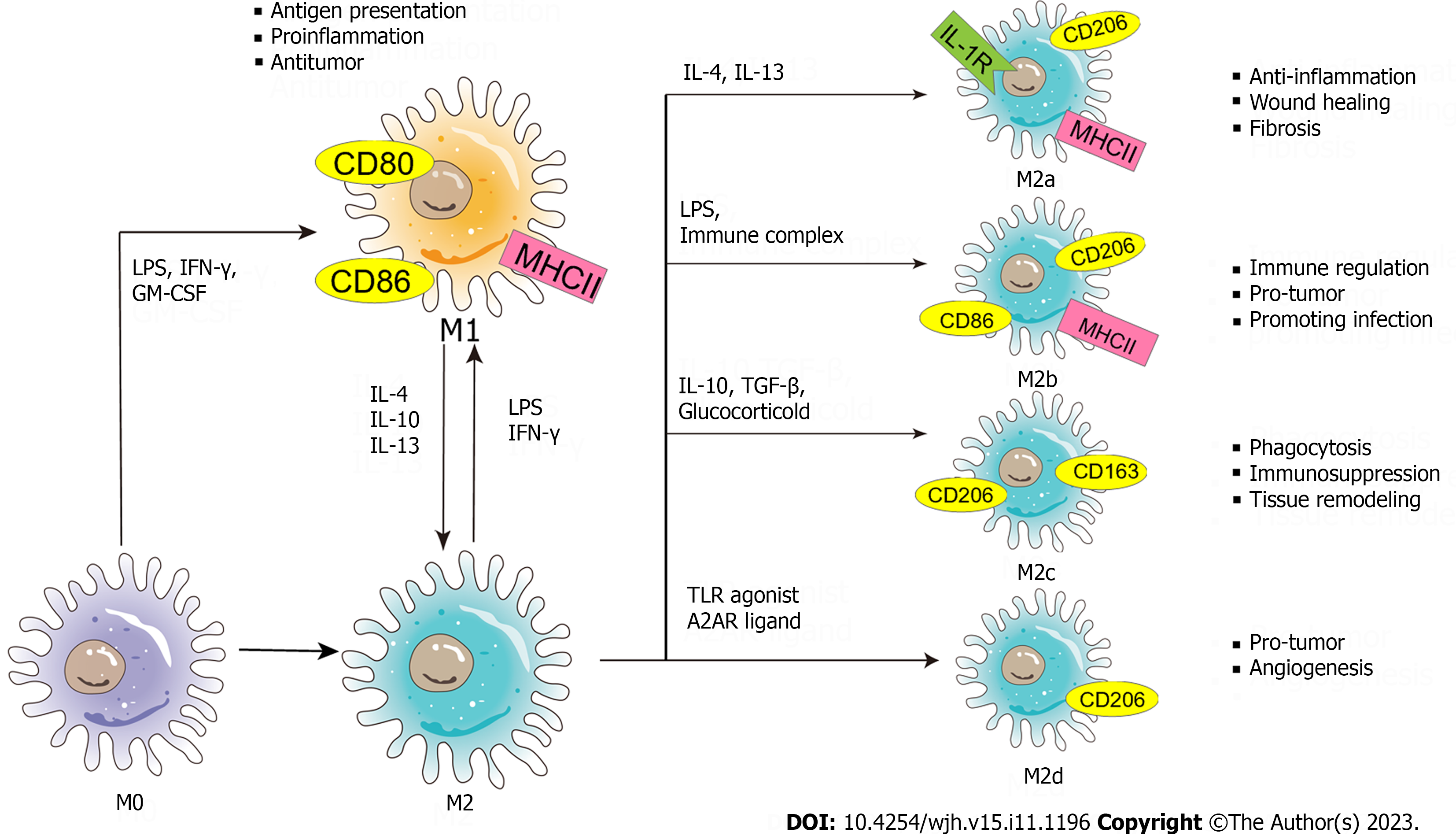Copyright
©The Author(s) 2023.
World J Hepatol. Nov 27, 2023; 15(11): 1196-1209
Published online Nov 27, 2023. doi: 10.4254/wjh.v15.i11.1196
Published online Nov 27, 2023. doi: 10.4254/wjh.v15.i11.1196
Figure 2 Schematic diagram of the phenotypes and functions of macrophage polarization.
The nature macrophage can be activated by a variety of influencing factors (such as lipopolysaccharide, interferon-γ, granulocyte-macrophage colony-stimulating factor, etc.) and polarized into two phenotypes - classically activated macrophages and alternatively activated macrophages. Exosomes carry stimulatory factors to activate macrophages. Macrophages themselves secrete exosomes to form a signal transmission network between macrophages and other cells. (M0: M0 macrophage; M1: M1 macrophage; M2: M2 macrophage; M2a: M2a macrophage; M2b: M2b macrophage; M2c: M2c macrophage; M2d: M2d macrophage; LPS: Lipopolysaccharide; IFN-γ: Interferon-γ; GM-CSF: Granulocyte-macrophage colony-stimulating factor; IL: Interleukin; TLR: Toll-like receptor; A2AR: A2A receptor; MHC: Major histocompatibility complex; TGF: Transforming growth factor.
- Citation: Xiang SY, Deng KL, Yang DX, Yang P, Zhou YP. Function of macrophage-derived exosomes in chronic liver disease: From pathogenesis to treatment. World J Hepatol 2023; 15(11): 1196-1209
- URL: https://www.wjgnet.com/1948-5182/full/v15/i11/1196.htm
- DOI: https://dx.doi.org/10.4254/wjh.v15.i11.1196









